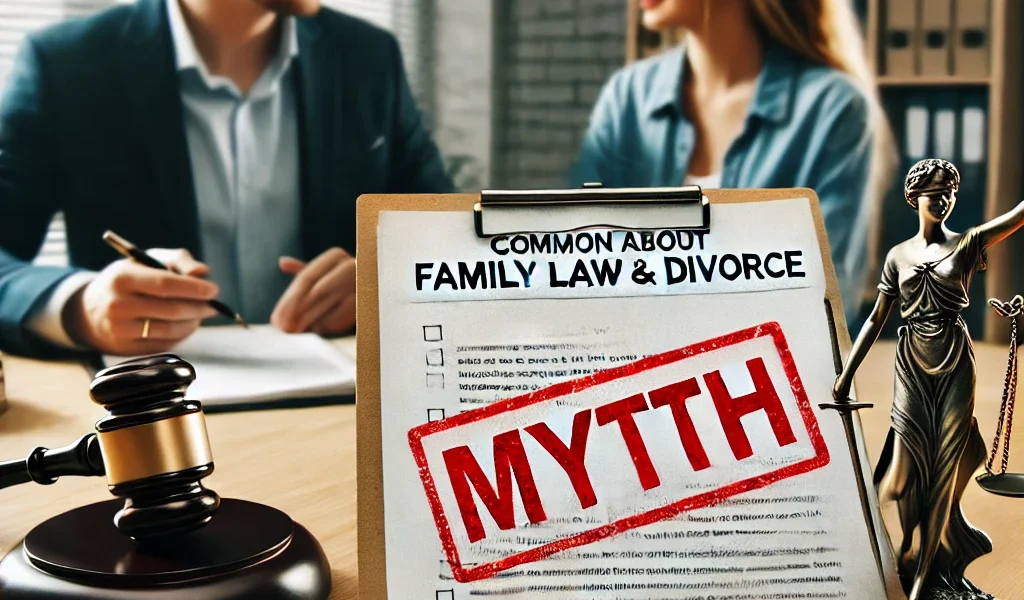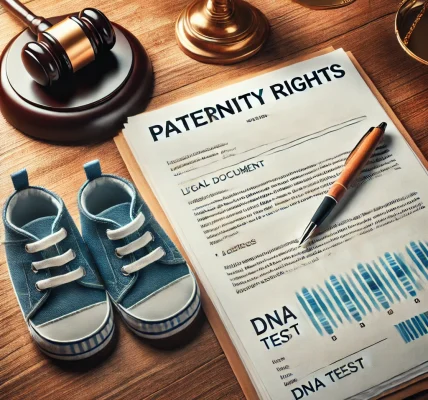Family law and divorce are often misunderstood due to widespread myths and misconceptions. These misunderstandings can lead to confusion, stress, and poor decision-making. It is crucial to separate fact from fiction to ensure that individuals going through divorce or family-related legal matters are well-informed. This blog will debunk some of the most common myths about family law and divorce.
Myth 1: Mothers Always Get Custody of Children
Reality:
While it was once common for courts to favor mothers in custody cases, modern family law prioritizes the best interests of the child. Courts consider various factors, including:
- Each parent’s ability to provide a stable environment.
- The child’s emotional and physical well-being.
- The parent-child relationship.
Fathers who are active caregivers and provide a stable environment have just as much chance of obtaining custody as mothers.
Myth 2: Divorce Always Results in a Bitter Court Battle
Reality:
Not all divorces end in lengthy court battles. Many couples opt for:
- Mediation: A neutral third party helps resolve disputes amicably.
- Collaborative Divorce: Both spouses work together with legal professionals to reach a fair agreement.
- Uncontested Divorce: If both parties agree on terms, they can finalize the divorce with minimal conflict.
Choosing negotiation over litigation can save time, reduce costs, and minimize emotional distress.
Myth 3: The Higher-Earning Spouse Always Pays Alimony
Reality:
Alimony, also known as spousal support, is not automatically granted. Courts consider factors such as:
- The length of the marriage.
- Each spouse’s financial situation.
- Contributions to the marriage, including stay-at-home parenting.
In some cases, neither spouse may be required to pay alimony, especially if both are financially independent.
Myth 4: Divorce Means Losing Half of Everything
Reality:
Property division depends on state laws. The two main approaches are:
- Equitable Distribution States: Assets are divided fairly but not necessarily equally.
- Community Property States: Marital assets are typically split 50/50.
Only marital property is subject to division, while separate property (inherited assets, gifts, or property owned before marriage) often remains with the original owner.
Myth 5: Child Support Can Be Used for Anything
Reality:
Child support is intended to cover the child’s essential needs, including:
- Housing and utilities.
- Food and clothing.
- Healthcare and education expenses.
If there are concerns about misuse, a parent can request an accounting of child support expenses through legal channels.
Myth 6: A Spouse Can Deny a Divorce
Reality:
No spouse can prevent a divorce from happening. If one party refuses to participate, the other can still file for divorce and obtain a judgment by default. Most jurisdictions allow for a no-fault divorce, meaning a marriage can end without proving wrongdoing.
Myth 7: Infidelity Guarantees a Favorable Divorce Settlement
Reality:
While adultery can impact divorce proceedings in fault-based cases, it does not always influence property division or spousal support. However, if a spouse’s affair resulted in financial loss (e.g., spending marital funds on a third party), the court may consider this when dividing assets.
Myth 8: A Prenuptial Agreement is Only for the Wealthy
Reality:
Prenuptial agreements protect both spouses, regardless of wealth. They can:
- Clarify financial rights and responsibilities.
- Protect assets acquired before marriage.
- Simplify property division in case of divorce.
Couples with businesses, significant debt, or children from previous relationships can benefit from a prenup.
Myth 9: Divorce Always Harms Children
Reality:
While divorce can be challenging, children thrive in stable, conflict-free environments. Parents can help by:
- Maintaining open communication and reassurance.
- Keeping a consistent routine.
- Encouraging a positive relationship with both parents.
Studies show that children adjust better when parents cooperate and prioritize their well-being.
Myth 10: You Don’t Need a Lawyer for Divorce
Reality:
While some couples handle divorce without legal representation, consulting a family law attorney can help avoid costly mistakes. A lawyer can assist with:
- Understanding rights and obligations.
- Negotiating fair settlements.
- Ensuring proper documentation is filed correctly.
Legal advice is especially crucial in cases involving children, property disputes, or spousal support.
Conclusion
Understanding the realities of family law and divorce can help individuals make informed decisions and reduce stress during the process. By debunking these common myths, separating spouses can navigate their legal rights and responsibilities more effectively. Seeking professional guidance, exploring amicable solutions, and prioritizing children’s well-being can lead to a smoother transition for all parties involved.




